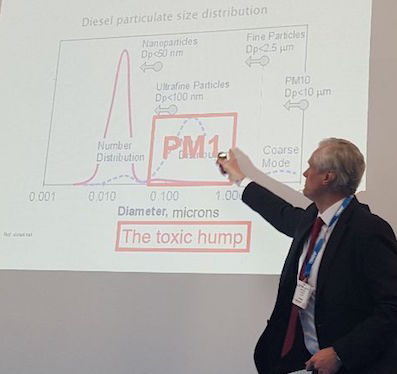 Cleanzine: your weekly cleaning and hygiene industry newsletter 26th June 2025 Issue no. 1168
Cleanzine: your weekly cleaning and hygiene industry newsletter 26th June 2025 Issue no. 1168
Your industry news - first
The original and best - for over 20 years!
We strongly recommend viewing Cleanzine full size in your web browser. Click our masthead above to visit our website version.
Camfil warns over air quality measurement
 Measuring larger particulate matter - so-called PM10 and PM2.5 - to determine the health impact of poor air quality is missing the point, according to a leading air quality expert.
Measuring larger particulate matter - so-called PM10 and PM2.5 - to determine the health impact of poor air quality is missing the point, according to a leading air quality expert.
Peter Dyment, technical manager of filter manufacturer Camfil, said the basis for measurement of harmful particulates should be on PM1 (particulate matter that is 1 micron or smaller in diameter).
His comments follow the publication of a study by air cleaning systems supplier Zehnder UK, which has presented initial findings from ongoing research into the impact of introducing a range of common pollutants into residential properties.
The study, based on data from commercially available air quality sensors in a handful of homes, advises of the need to improve education on ventilation use over concerns at spikes in indoor level of PM2.5 particles caused by inadequate ventilation in properties after everyday tasks such as cleaning or cooking.
However, Peter Dyment warned: "PM1 particles are around three times more penetrating into the lungs than larger particles in PM10 and about twice (1.7x) more than those in PM2.5 so they are far more damaging to health. If the PM1 comes from traffic-sourced air pollution, then you are likely to find that it is also a lot more toxic.
"In fact, traffic diesel PM1 is a group 1 carcinogen as labelled by the World Health Organisation which ascribes it as the highest level of causing cancer. It can damage DNA and there is no safe level of exposure to this form of air pollution."
Although the WHO publishes exposure levels for PM2.5, Peter cautioned that it does not talk specifically about traffic air pollution. He added: "The nature of particles is that, when they are smaller, they get into the body so much more easily...
"Published government data has been based onPM10 and is now based on PM2.5 more often than not. The WHO is looking to move in the general direction of PM1 I think, but it hasn't happened yet. When you consider the characteristics of these particles if they are much more penetrating and more toxic, they should be at the top of the priority list."
He acknowledged that the smaller the particle the more difficult it is to measure: "But, with current technology, we should be able to start measuring PM1 to an acceptable level of accuracy," he suggested. "There is a public need for this; it's not some academic point, it's something that is very important because measuring PM1 actually tells you how bad the risk is to health.
"You can then apply PM1 rated filters to counteract the threat. If you are fiddling around with PM10 and PM2.5 you are getting an inaccurate measurement of the risk to health and you are ending up with a rated filter that is not fit for purpose - a high efficiency at PM10 might be a low efficiency at PM1.
"Filtering clean ventilation outside air from PM1 must be a priority to protect people in city buildings. New technical standards BSI CEN ISO are in place to enable effective solutions."
18th July 2019







